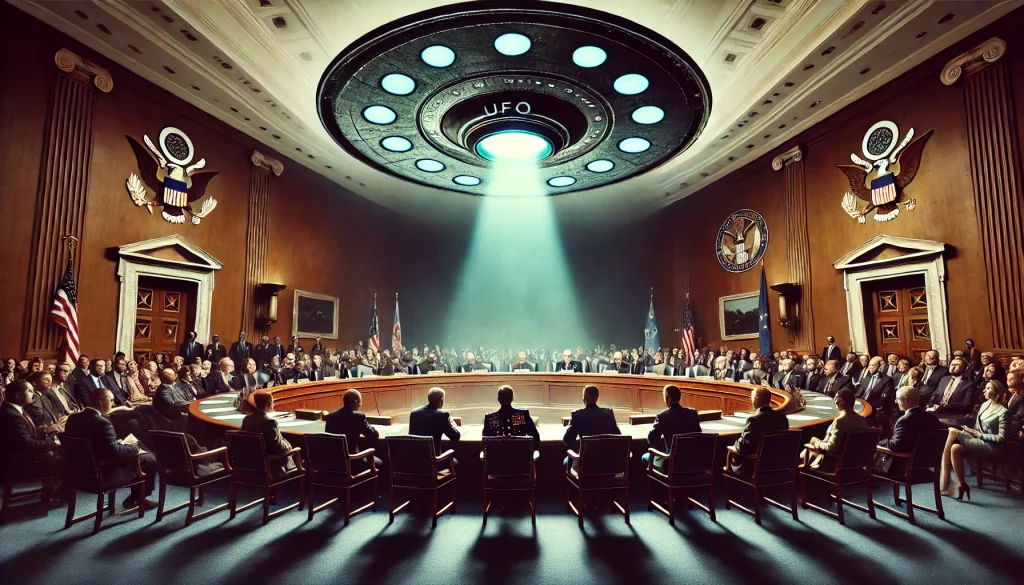On November 13, 2024, the United States Congress held a high-profile hearing titled “Unidentified Anomalous Phenomena: Exposing the Truth.” The session, attended by lawmakers, scientists, former military officials, and whistleblowers, aimed to unravel the mystery surrounding Unidentified Aerial Phenomena (UAPs) and address growing demands for government transparency on the subject.
https://twitter.com/UAPodcast850/status/1856736446775767421
The Witnesses and Their Revelations
Luis Elizondo: Unveiling Secrets
Luis Elizondo, a former Department of Defense (DoD) official and one of the most prominent voices in UAP discussions, delivered a compelling testimony. Elizondo asserted that UAPs are not only real but are actively monitoring sensitive military installations worldwide. He stated:
“These are not weather balloons or simple drones; these are advanced technologies exhibiting characteristics beyond current human capabilities.”
Elizondo claimed that some UAP technologies have been captured and studied by both the U.S. and foreign adversaries. He alleged the existence of reverse-engineering programs designed to decode these technologies, though much of this work remains shrouded in secrecy. Furthermore, Elizondo detailed the personal and professional risks he has faced, including threats to his career and life, as a result of his advocacy for transparency.
Dr. Tim Gallaudet: Firsthand Military Encounters
Dr. Tim Gallaudet, a retired Navy Rear Admiral, provided firsthand accounts of UAP sightings during a 2015 military exercise involving the Theodore Roosevelt carrier strike group. He described how unidentified objects, capable of extreme speeds and abrupt maneuvers, came dangerously close to F-18 fighter jets:
“These encounters were not isolated incidents. They demonstrated a level of technological superiority that we cannot match.”
Gallaudet criticized the culture of over-classification within the military, which he argued has impeded efforts to address these phenomena. He emphasized the importance of open data sharing, both within government agencies and with the public, to maintain trust and improve national security.
Michael Gold: Advocating for a Scientific Approach
Michael Gold, a former NASA associate administrator, focused on the need for a scientific and stigma-free approach to studying UAPs. Gold argued that NASA’s involvement would bring credibility and rigor to UAP research, setting a precedent for other scientific institutions to follow. He stated:
“The stigma around UAPs is one of the greatest obstacles to understanding them. We must encourage scientists to investigate these phenomena without fear of ridicule or professional consequences.”
Gold also called for greater transparency and declassification of UAP-related information, emphasizing that public trust hinges on the government’s willingness to disclose its findings.
Lawmakers Demand Transparency
The hearing was co-chaired by Representatives Nancy Mace and Glenn Grothman, who expressed bipartisan frustration over the government’s longstanding secrecy on UAPs. They criticized the lack of accountability and consistent messaging from agencies like the Department of Defense and the Pentagon.
“The American people deserve to know what their government knows,” said Representative Mace. “This isn’t just about national security; it’s about restoring public trust in our institutions.”
Representative Lauren Boebert raised questions about the possibility of underwater alien bases, citing recent reports of UAP activity in oceanic environments. While witnesses acknowledged such reports, they stopped short of confirming the existence of underwater bases.
https://twitter.com/GrantLavac/status/1856816631558934704
National Security Implications
One of the hearing’s central themes was the potential threat posed by UAPs. Witnesses described incidents where UAPs exhibited capabilities that outpaced human technology, including hypersonic speeds, abrupt directional changes, and advanced propulsion systems. These characteristics have raised alarms about vulnerabilities in U.S. air defense systems.
Dr. Gallaudet underscored the urgency of addressing these threats, stating:
“If foreign adversaries have access to this technology, it represents a significant national security risk.”
The Government’s Position
The Pentagon’s recent report on UAPs accounted for most sightings as mundane occurrences—drones, weather balloons, or optical illusions. However, the report acknowledged that a small percentage of cases remain unexplained. Critics, including Elizondo, argued that the government’s explanations fail to address the more extraordinary characteristics reported in many UAP encounters.
The Road Ahead
The hearing concluded with calls for concrete actions:
- Declassification of Information: Lawmakers and witnesses emphasized the need to release more UAP-related data to the public.
- Scientific Research: Encouraging institutions like NASA and universities to lead unbiased investigations into UAPs.
- Legislative Oversight: Establishing independent bodies to oversee UAP investigations and ensure accountability within government agencies.
Conclusion
The November 13 hearing marked a significant step toward unraveling the mystery of UAPs. It highlighted the urgent need for transparency, scientific inquiry, and robust oversight. As the debate continues, one thing is clear: the public’s demand for answers is stronger than ever.

